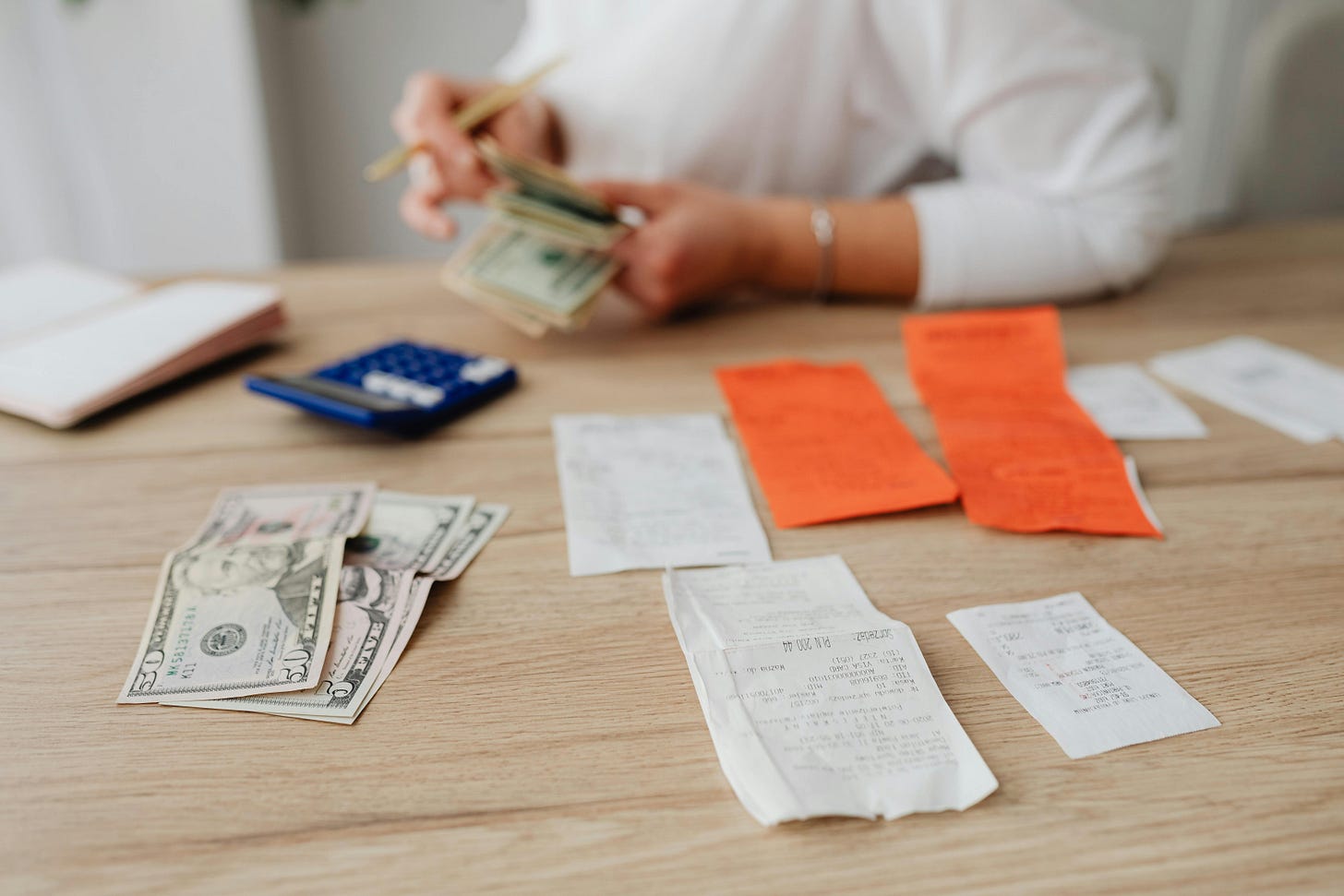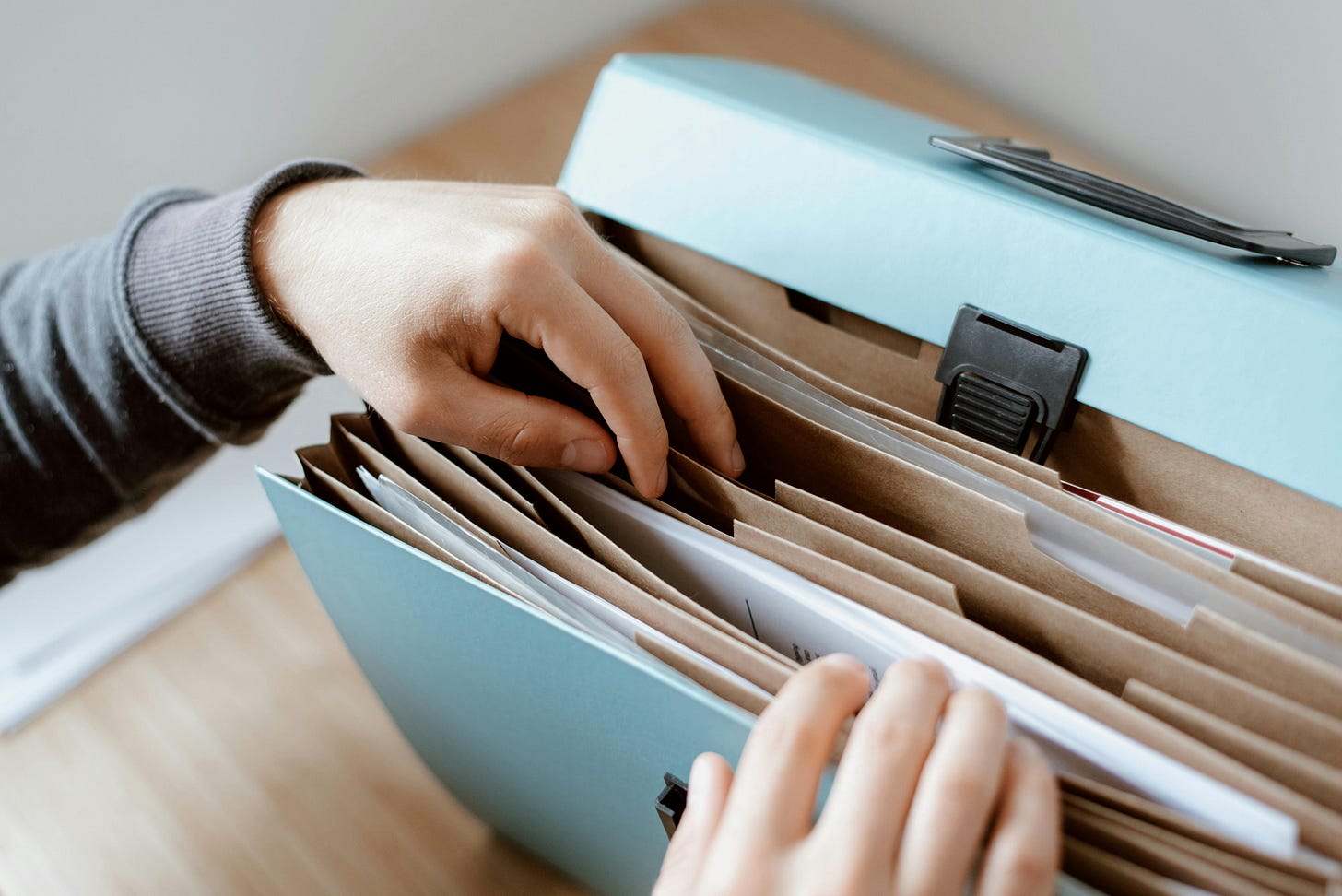Boot the Shoebox: An Easy Method to Save & Store Paper Receipts
Post #35: Save your receipts! Why you should ditch the shoebox - and how to do it.
In this Substack, I will walk you through the process of starting, operating, maintaining, and — if needed — selling or closing your own small business.
Today, I want to talk about why you need to save your paper receipts.
This may seem like a really deep dive on a micro-topic, but I cannot tell you how important it is to save your paper receipts.

👉 Subscribe to this Substack if you want to learn how to setup, operate, maintain, scale, etc… a small business. The Journey began with Post #1.
Also, be sure to check out these FREE resources:
Bootstrap Your Business Workflow - a step-by-step guide with the links to all of the top daily posts that walk you through the process from scratch
BYB Book Recommendations - a collection of the best business books to help you on your entrepreneurial journey
BYB News Alerts! - urgent news and updates for self-employed and business owners - delivered to your inbox - so that you can be more prepared
BYB Documents - a repository of guidance for important business documents with instructions and guides to use them in your self-employment journey
In case you missed it:
Why Save All of Your Paper Receipts?
Amidst the gagillion tasks of running your business, the importance of saving business-related receipts is too often disregarded by even the most savvy of business owners.
This habit is not just about organization… it's a strategic move that can safeguard your business's financial health and operational integrity.
Here are a few reasons why:
Tax Deductions and Credits
Accurate records of business expenses are vital for claiming deductions and credits during tax season.
Keep track of expenses - such as the cost of running your home office, office supplies (even sticky notes!), and internet services - can significantly reduce your taxable income.
💡 Tip: Learn more about Home Office Deductions.
Financial Management
Detailed receipts makes it easier for you to precisely track your cash flow.
Even the pennies count!
Having those receipts readily at hand makes it easier to reconcile your books, update your general ledger, and make sure that you can fully reimburse yourself or your staff.
💡 Tip: Read more about Financial Management for small business owners.
Legal Compliance
A complete collection of evidence (via proofs of purchase) can simplify the effort to comply with tax laws and regulations, reduce the risk of legal issues, and help you win an IRS audit.
💡 Tip: Discover more guidelines for Records Retention (how long you should keep records).
Tips for Managing Your Paper Receipts
I know far too many folks who just toss their receipts in a shoebox and then suffer the consequences of disorganization when it comes time to do their taxes or find a proof of purchase when they really need it.
📌 A Shoebox does not count as part of a Record-Keeping System.
Follow these guidelines to save yourself a ton of headache and save money.
Implement a Systematic Approach
Develop a consistent method for storing and organizing receipts, whether through physical filing systems or digital tools.
💡 Tip: Keep reading (below) to learn more about my system for saving paper receipts!
Technology is Your Friend
Consider using accounting software or mobile apps designed for expense tracking.
Software and apps on your smart phone can digitize receipts, making storage and retrieval more efficient.
Understand Retention Periods
Generally, it's advisable to retain receipts and financial records for 2 to 7 years, as tax authorities may review returns within this time frame.
💡 Tip: Review my post on Records Retention (how long you should keep records).
Regularly Review and Reconcile
Periodically reviewing your receipts against bank statements and financial reports ensures accuracy and helps identify any discrepancies early.

My Chronological Storage System for Paper Receipts
Everyone has their own method of storing files, and if you have a good record-keeping system, stick with it!
The goal is to be able to find the files you need when you need them.
For my paper receipts, I use a chronological storage system and try to get this task done the same day as I made the purchase.
Here is how it works:
(1) Collect All Receipts in One Place
When I return home from shopping, or after submitting my online purchase, I collect my receipts for processing.
My husband even saves his receipts and puts them in a receipt collection bin that we have set up for collecting all of the receipts.
💡 Tip: I typically print my online receipts (for business-related purchases only), just to speed up the process of getting my systems current.
(2) Enter Purchasing Data into Transactional Accounting System
One by one, I enter the transaction amounts with details about the purchase into my transactional accounting system.
This data includes:
Date on the receipt
Vendor
Total amount
Category of purchase (office supplies, dues and subscription, office furniture, etc.)
Memo (what I bought, and a note for unusual purchases)
When there are multiple items on the same receipt that belong to different categories, I use the “split” transaction feature to itemize by categories for reporting later (I’ll cover this in a future post).
💡 Tip: I use Quicken for transactional accounting and QuickBooks for the business books. These two products work well for me, but you may want to use alternative products for your needs.
(3) File Paper Receipts in a File Folder
Once entered into my transactional accounting software, the paper receipts get filed into a hanging file folder.
Each folder is labelled with the month and year in which the purchase was made (e.g.: FEB 2025), and is stored chronologically in a file cabinet with previous monthly folders.
For example, if I bought printer paper from Office Depot on February 6, 2025, I file the receipt in my FEB 2025 folder and capture the purchase data in Quicken on the same day (or very soon afterwards) that I made the purchase.
✔️ That’s it!
Finding Receipts Later…
This is where the rubber meets the road.
If I need to find a receipt, I can search for the purchase quickly in Quicken (using anything I can recall, such as the vendor name or item I purchased), get the date of purchase from the ledger record (i.e.: the line item with the data I entered for the purchase in Quicken), and then find the physical receipt in the physical folder.
It all takes about 30 seconds!
💡 Tip: I will get into more details about how to handle digital receipts, expense reporting, and getting the data from your transactional accounting system to your business books in upcoming posts.
Subscribe to get notifications when these topics are published!
Next Steps
In my next post, I am going to cover digital receipts as part of your record-keeping system!
Continue the Journey with Post #36 —>





This is super helpful, especially for keeping things organized without overcomplicating it. Filing receipts by month and year is such a simple but effective system—definitely something I need to be more consistent with!
Thanks for the tips! I personally love the QuickBooks Online mobile app reciept capture.